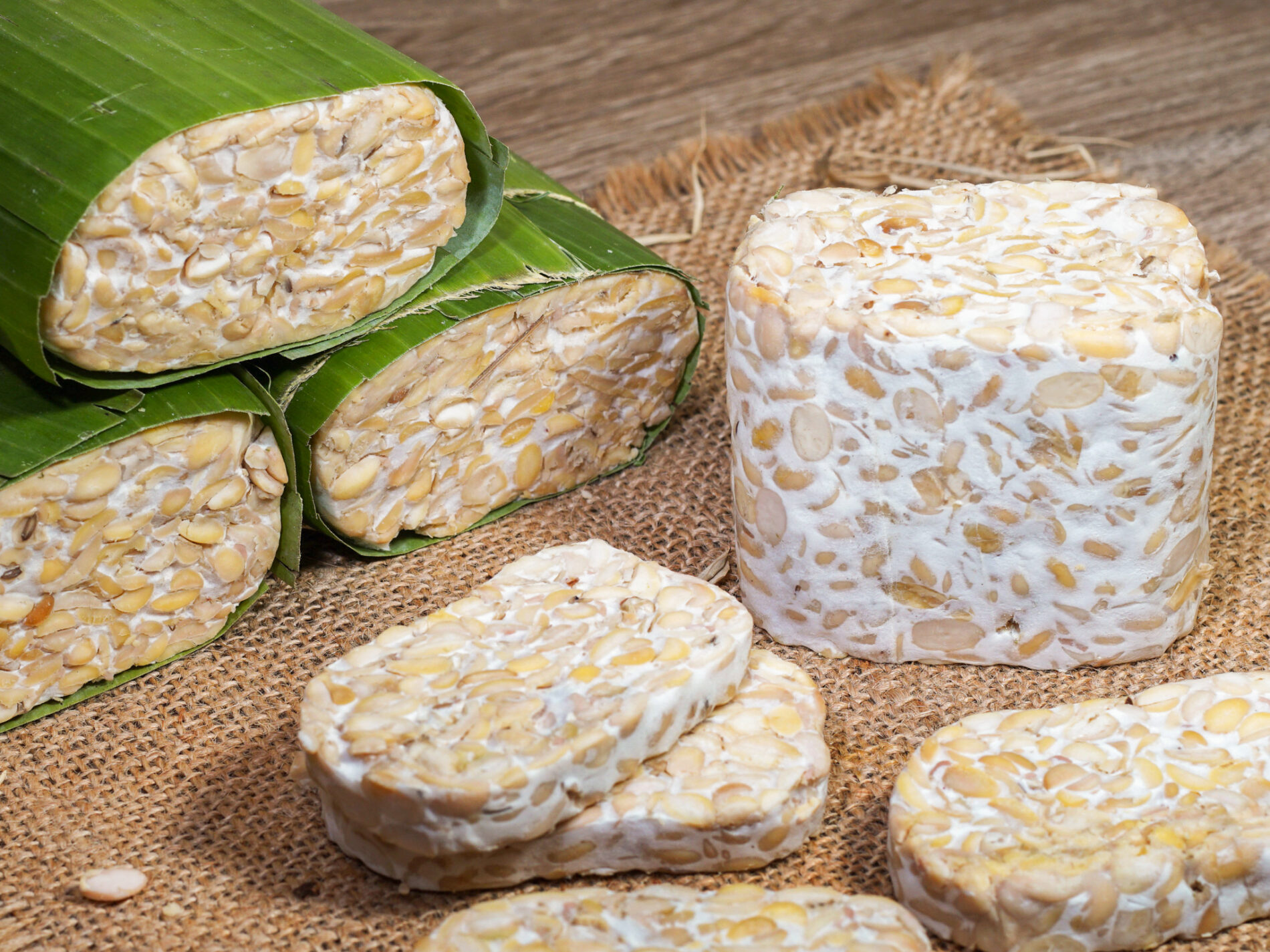A vegan diet comes with its perks and challenges. It has been scientifically proven that the excessive consumption of red meat can cause a build-up of cancerous cells.
Reducing the amount of meat in the everyday diet is usually considered a positive step for a longer, healthier life.
And yet, animal protein is rich in vital amino acids. They are lacking in most plant-based products.
Now behold tempeh. This product is both nutritious and contains hunger-quenching plant protein similar to meat. As such, it’s a rare exception – along with tofu and some other soybean fermented products.
What is tempeh made of?
Tempeh originates from Indonesia. It’s made of fermented soybeans, pressed into bricks for easier use and transportation.
The friendly bacteria binds boiled soybeans (and other legumes and wheat, if added) together. It has a slightly nutty and cheesy taste, which, when marinated, soaks up the flavours perfectly.
Tempeh can be eaten raw, but the flavour is greatly enhanced when it’s steamed, boiled or fried after marinating.
Add cubes of cooked tempeh to your favourite stir-fry, salad bowl or eat as a side dish.
Tempeh is nowadays widely available
You can find tempeh in most grocery stores’ healthy food and vegan sections. It will most likely sit next to the tofu.
But shopping it at Farmy is probably the easiest! And tempeh can also be made at home. You just need a special tempeh starter. It’s a fungus that contains Rhizopus bacteria.
Make your own homemade tempeh
Soak 400 g / 2 cups of soybeans overnight. Drain the beans and discard the liquid. Rinse the beans in water.
At this stage, you can dehull the beans by gently rubbing the softened shell off with your fingers. By dehulling the soybeans, you get closest to the store-bought tempeh.
However, skipping this step will not affect the result too much. You will still have perfect tempeh with or without the skin.
Boil the soybeans on medium heat. This can take up to 1 hour or more until the beans reach the desired doneness. Once almost cooked, mix in 4 tbsp of apple cider vinegar and finish cooking. This creates friendly pH acidity for the bacteria to grow.
Drain the water and return the pan back to the stove to evaporate the leftovers of the liquid. Cool the beans to 35° C / 95 F. Sprinkle 1 tsp of the tempeh starter over it and stir to coat the soybeans evenly.
To make a tempeh brick use a zip lock bag. Using a skewer, punch 15-20 holes in the bag. This will allow the bacteria-mix to “breath”. Fill the bag with the soybeans and form a rectangular-shaped patty. Fold the bag if needed.
Traditionally, Indonesians would use palm leaves to wrap soybeans for tempeh. If you can source the leaves from an Asian market, go ahead and use them. Palm leaves don’t need to be perforated as they naturally allow oxygen. This is important for the bacteria’s growth.
Place the zip-lock bag in between two heavy chopping boards. Then transfer it into an oven with just the light switched on for 12 hours. The best temperature for the fermentation ranges between 29-32 °C / 85-91 F. Use an incubator if you have one.
Remove the bag from the oven or incubator. Leave it in a warm place for the fermentation process to finish. This can take up to 48 hours.
Your tempeh is ready! The brick should be bright white, and the beans will be nicely bound together. Keep it in a fridge for a week, or freeze it for up to 3 months.











What do you think?